-
24th June 2012, 12:35 AM
#1
Expert

dingo identification
the new laws allowing pest control in NSW's national parks, has sparked a debate regarding dingoes, as some of you may have seen.
Education regarding dingo behavior and appearance which sets them apart from domestic and cross breeds will be discussed in here. this is to help any potential shooters to be better informed about the dog you have in your sights. Is it a dingo or not?
all pure dingoes australia wide share the same basic DNA structure, and there are 4 main strain variations applicable to climate and location;
Alpine, range through NSW and VIC mainly in the highlands or hilly country. being slightly heavier build than its cousins. usually orange in appearance with white points on its feet, tail, and muzzle. they often have a white chest too. Alpines also show a black and tan appearance quite similar to a kelpie, and 'all white' alpines are reasonably common too. females are lean in comparison to males, looking very kelpie like, while the males tend to show more of a stocky 'heeler type' chest. they have rounded ear tips compared to kelpies, which tend to come to a more distinctive point.
Desert, range through the outback, the more remote, the better for these guys. they are found in parts of all states/territories except tassie and canberra. they tend to look very similar in size and shape to a kelpie, lean with muscles on their rump and chest. they tend to mainly be of orange appearance with white points, however, it is not uncommon for them to have darkish muzzles. i have seen 'all white' dingoes in areas that are considered desert territory, and have heard of a couple of black and tan coloured in arid regions.
Tropical, these dingoes tend to look similar to a desert variety. larger in build in many areas through out the top end of WA, NT including arnhem land, but as they creep more into QLD, they tend to be more similar in size to their desert cousins. rarely are they anything but orange in appearance, with white points, however, dark muzzles are quite common. it is not uncommon to find 'all orange' tropical dingoes, without the white points, but i cannot confirm whether this has to do with crossbreeding many generations ago or not.
Fraser Island dingoes are considered the purest strain of dingo. they are smaller, leaner, and almost always orange in appearance. young pups quite often have darkish muzzles, however, as they get older they tend to turn more white. they also tend to have white points, chest and underside, as with the most common appearance accross all strains.
All dingoes have scent glands just below the base of the tail, these quite often look like dark patches and are far more pronounced visually up until 2yrs of age in males and a little younger in females.
All dingoes have larger K9 teeth than domestic breeds, often exceeding 25-30mm in length from the gumline.
The jaw hinges further back in the head from domestic breeds as well. domestic breeds tend to hinge below the ear, slightly towards the nose, dingoes hinge below the ear slightly to the neck. this allows the dingo to open its jaws substantially more than domestic breeds.
The ears on a dingo stand upright with rounded tips, and are quite large for the head shape in all but Alpine dingoes, whos ears tend to be much smaller and in proportion with the rest of the head.
Most dingoes eyes are golden in appearance, it is very rare to find dingoes with any other eye colour than a shade of gold (yellow/orange, yellow/brown, etc). i would question the purity of a dingo with any other eye colour.
there are a number of other dingo specific characteristics that are not visible at a glance, such as, dingoes can spread their front legs out side ways like a cross, without breaking the chest bone and killing the dog, domestic breeds cannot do this. many dingoes have what is called "feather foot" where the hair between the pads grows so long that it folds under the pads and their tracks look more muffled. the teeth of dingoes, tend to point towards the rear of the mouth more than domestic breeds and are far sharper and thicker at the gumline.
pure dingoes only breed once a year, unlike cross bred and domestic dogs, born between late march and early august, so young pups should only really be seen from may/jun through to aug/sep. if pups are seen outside of these times it is likely that they have been cross bred somewhere in their history.
contrary to belief, pure dingoes are not the aggressive killers that they are made out to be. pure dingoes are driven by instinct and survival entirely. they are shy, but curious, aloof, and quite nervous around people. they hunt for food only, there appears to be no pleasure in killing. they tend to return to the same carcass until it is finished, even when there is live prey nearby. they have been known to take more than they can eat in a short time, this is apparent in areas where food is scarce, not so apparent in areas where food is plentiful. they will scavenge before killing, and they will almost always take the sneak approach when hunting. they are very opportunistic creatures, and their curiosity often finds them sneaking into camps for a snatch and grab meal.
i have spent several years in the bush in highly populated dingo and wild dog areas, never once have i ever felt threatened by what appeared to be a pure bred dingo, but i have been directly threatened and even approached and surrounded as prey by clearly crossbred wild dogs.
when a dingo does seem aggressive and growling or making other noise at you, it is almost always a playful tactic, this is quite common in areas where dingoes have a high human contact, such as fraser island. a dingo is most dangerous when it is backed into a corner or otherwise feels threatened. a defensive dingo will be vocal, growls, snaps, even what sounds like a short bark, an offensive dingo, is silent. if confronted by a dingo/es, do not run under any circumstance. stand your ground, make growling noises, bark, stomp your feet, raise your arms to the side. do not yell in human language, it does nothing but provoke the animal as it doesnt understand you. you need to speak "dog".
if a dingo tries to play with you, it is not to be considered dangerous at all, its behavior should be ignored so as not to encourage the animal. once a dingo recognises that it is ok to "play" with people, it will try to do the same with others, which causes confusion not only with the dingo, but with people that do not understand the dingo's intentions.
if by chance you do find yourself attacked by a dingo or pack, make sure absolutely that your stomach and throat are protected by your arms and elbows. curl up into the fetal position on your side and do not move. make no noise. you may try to fight using your legs and kness and by rolling on the ground, if the attack does not stop after laying still. this is a last straw defence and should not be considered an option unless in dire extremes, as can be seen as an offensive attack which in turn will promote the attacking pack to become more ferocious.
here are a few photos of a desert variety dingo (mine). and i will post more detailed pictures regarding jaw structure, teeth, colour etc when i take some photos of some friends alpines.
a young dingo pup at 10 weeks old

a young dingo pup at approximately 5 months old

notice the rounder edge and tip of the ear compared to the other 2 dogs. one is a husky, the other is a kelpie cross dingo
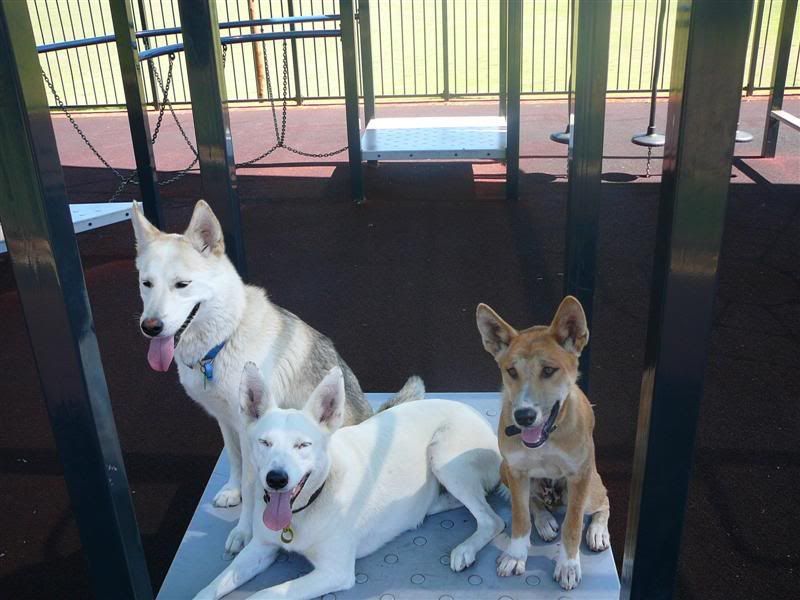
a front on look showing eye colour, ear shape and size

a dingo showing attention to its surroundings
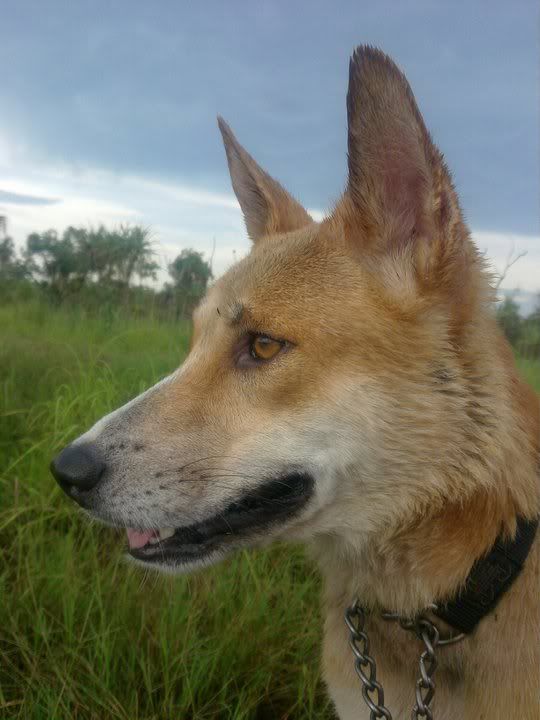
playful behavior
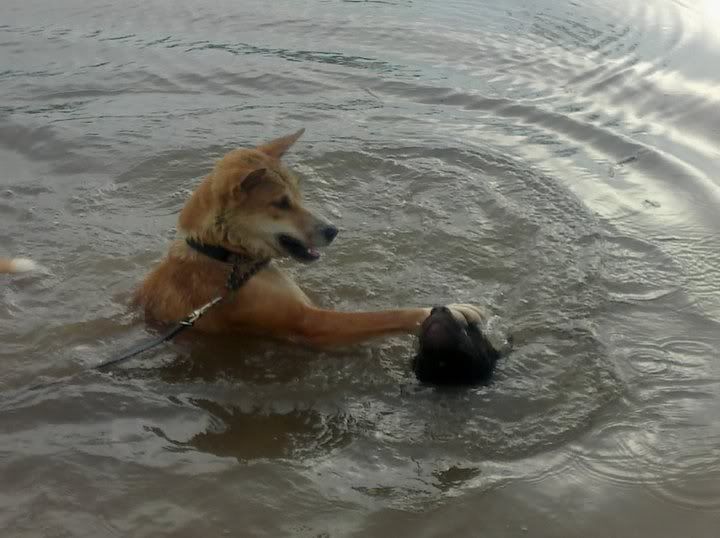

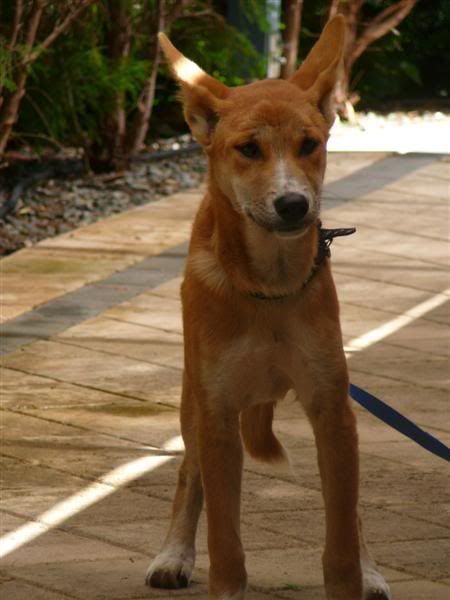
relaxing at home, you can see the lower K9's length in this pic
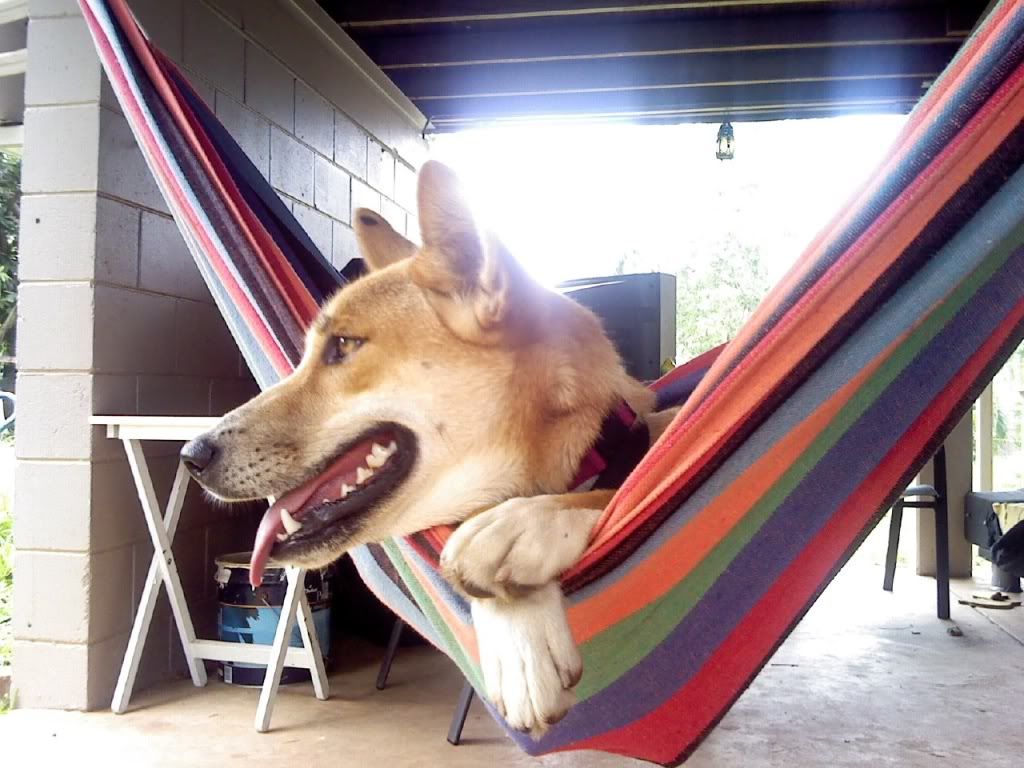
my boy showing just how australian he truly is (this is a stolen rum that he has put down on his feeding plate so as not to spill any on the ground)
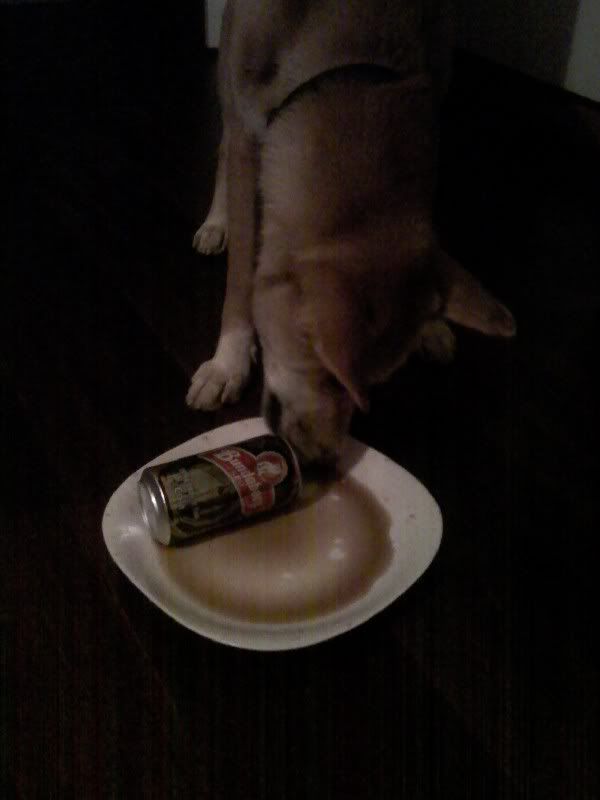
how their colour helps them blend in with their surroundings
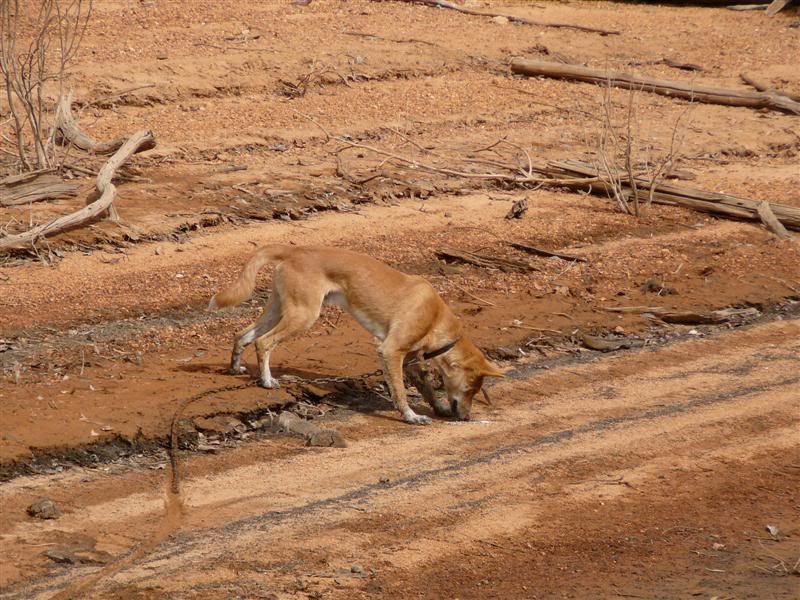
Last edited by stets; 24th June 2012 at 01:16 AM.
-
The Following 17 Users Say Thank You to stets For This Useful Post:
AB (24th June 2012), Bob (24th June 2012), boots (24th June 2012), Clunk (24th June 2012), FNQGU (3rd August 2014), growler2058 (24th June 2012), hekarewe (24th June 2012), jack (3rd August 2014), Maxhead (24th June 2012), menis (5th August 2014), my third 256 (3rd August 2014), NissanGQ4.2 (24th June 2012), oncedisturbed (26th June 2012), patrol2.8 (24th June 2012), Silver (24th June 2012), Sir Roofy (24th June 2012), The BigFella (14th September 2012)
-
24th June 2012 12:35 AM
# ADS
Circuit advertisement

-
24th June 2012, 07:37 AM
#2
Rotaredom


 Time is never wasted when your wasted all the time
Time is never wasted when your wasted all the time 
WARNING: Towballs used for recoveries can, and do kill people and damage property.
-
-
24th June 2012, 09:53 AM
#3
SUCH IS LIFE

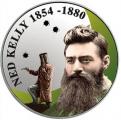
Thanks for the excellent description of different types and a great write up all up..
________________________
______ 2017 D-Max _______
I don't have a short temper. I just have a quick reaction to bullshit
WARNING: Towballs used for recoveries can, and do kill people and damage property.
-
-
24th June 2012, 05:41 PM
#4
RIP - valued member and true gentleman of this forum that will be missed by many!

Thank you Stets, I'll read it a few times until it all sinks in
RIP - valued member and true gentleman of this forum that will be missed by many!
"As a boat owner and a four wheel drive owner I feel like a pelican: every where I look I see a big bill in front of me”
-
-
24th June 2012, 09:55 PM
#5
Expert

If you guy have any more specific questions on the subject, I'm more than happy to answer them, most of what was written is common knowledge through the dingo conservation community, (mainly being wildlife parks, dingo specific organisations etc), but personally, I have experienced Dingoes in the bush more so than the vast majority of the "self titled" experts. Many people can make comment regarding domesticated and humanised dingoes, and dingoes in general, but there aren't many of us that have any authority to talk on dingoes in their natural habitat. I still have years of life left before I can claim to be an expert (in my opinion), but I will share what I know any time.
Tap,tap,tapping in your head
-
The Following 2 Users Say Thank You to stets For This Useful Post:
growler2058 (24th June 2012), NissanGQ4.2 (24th June 2012)
-
26th June 2012, 12:48 AM
#6
Expert

Here is a recent news interview with one of the better dingo researchers, some of what he says I don't 100% agree with, but for the most part, it's a pretty fair call
Tap,tap,tapping in your head
-
-
26th June 2012, 12:49 AM
#7
Expert

-
-
26th June 2012, 10:22 AM
#8
The Mad Ozzy

good write up, Wonder whether it will flow on to other States to allow feral control in the forrests etc??
2009 GU ST 4.8L AUTO WAGON, 2" OME LIFT, 33" A/T'S, ARB DELUXE BAR, WARN XD9000 WINCH, NARVA 170 SPOTTIES, SCRUB BARS / SIDE STEPS, LONG RANGE TANK, DUALL BATTS, REAR DRAWER SYSTEM, ARB AWNING, KAYMAR REAR WHEEL CARRIER, 3" ZORST
 www.swat4x4.com
www.swat4x4.com
-
-
26th June 2012, 11:27 AM
#9
Patrol God


I have found this to be very informative Post and I thank you for your excellent write up
-
-
26th June 2012, 11:40 AM
#10
Expert

ImageUploadedByTapatalk1340672991.490187.jpg this picture shows a common dingo cross kelpie. Notice the similar coloring, pointy ears, smaller eyes and less 'in-tune' stare.
Tap,tap,tapping in your head
-















 Reply With Quote
Reply With Quote


 Time is never wasted when your wasted all the time
Time is never wasted when your wasted all the time 




